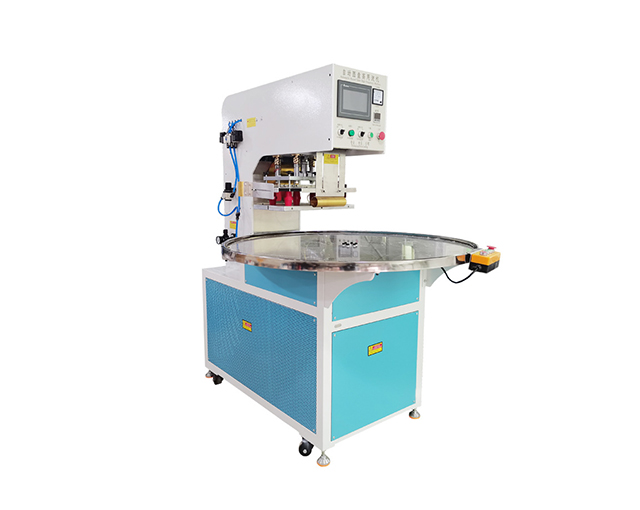Time:2025-09-02 Views:1 source:News

Embossing machine transportation logistics refers to the specialized planning, packaging, and shipping processes designed to safely deliver embossing machines—heavy-duty equipment used in industries like printing, packaging, textile, and leather processing—to customers worldwide. Unlike lightweight consumer goods, embossing machines are typically large (ranging from small tabletop models of 50kg to industrial-scale units over 500kg), have delicate precision components (e.g., embossing rollers, pressure control systems), and require strict environmental control during transit to avoid damage. This makes transportation logistics a critical 环节 that directly impacts the machine’s functionality, delivery timeliness, and overall customer satisfaction.
One of the core priorities in embossing machine transportation is customized packaging to protect against physical impact, vibration, and environmental factors. For small tabletop embossing machines (used in small printing shops), packaging often involves high-density foam inserts (to cushion the machine) placed inside corrugated cardboard boxes reinforced with wooden frames. For larger industrial embossing machines (e.g., those used in large-scale packaging plants), heavy-duty wooden crates (compliant with ISPM 15 standards for international shipping, which require heat-treated wood to prevent pest transmission) are used. These crates are lined with shock-absorbing materials like rubber mats or airbags to minimize vibration during transit—vibration can loosen internal components (such as roller bearings) or misalign precision parts, leading to performance issues. Additionally, moisture-absorbing desiccants are placed inside the crates to prevent rusting of metal components in humid shipping environments (e.g., ocean freight across tropical regions).
Mode of transportation selection is another key factor in embossing machine logistics, determined by the machine’s size, destination, and delivery timeline. For domestic shipments (e.g., within the same country), road transport using flatbed trucks or enclosed trailers is preferred. Enclosed trailers are ideal for protecting the machine from weather elements (rain, dust) and theft, while flatbed trucks are used for extra-large machines that exceed the height or weight limits of enclosed trailers. For international shipments, ocean freight is the most cost-effective option for heavy machines, though it has longer transit times (2-6 weeks). Air freight is used for urgent orders (e.g., a customer with a production line shutdown) but is significantly more expensive and limited by weight and size constraints (typically for machines under 100kg). For example, an industrial embossing machine shipped from China to Germany would likely use ocean freight in an ISPM 15 crate, with a transit time of 4 weeks, while a small tabletop model shipped from the US to Canada might use road transport in an enclosed trailer, arriving in 3-5 days.
Logistics planning and tracking are essential to ensure smooth delivery. Professional logistics providers (specializing in heavy machinery) conduct pre-shipment inspections to confirm the machine’s condition, document any existing minor scratches (to avoid post-delivery disputes), and verify that all accessories (e.g., spare rollers, user manuals, tools) are included. They also plan routes to avoid roads with weight restrictions or poor infrastructure (e.g., unpaved roads that increase vibration) and coordinate with local authorities for oversize load permits if needed. Real-time tracking systems (using GPS or container tracking numbers) allow both the supplier and customer to monitor the shipment’s location and estimated arrival time. For instance, a customer waiting for an embossing machine can check the tracking portal daily to see if the shipment is on schedule, and the logistics provider can proactively notify the customer of delays (e.g., port congestion) and adjust the delivery plan accordingly.
Last-mile delivery and unloading are critical final steps in the logistics process. Unlike standard freight, embossing machines require specialized equipment (e.g., forklifts, cranes, or hydraulic lift gates) for unloading, as manual handling is impossible due to their weight. Logistics providers coordinate with local teams to ensure the necessary equipment is available at the delivery site—for example, a crane may be required to unload an industrial embossing machine from a flatbed truck into a customer’s factory. Additionally, the delivery team may include technicians who assist with positioning the machine in the customer’s facility (e.g., aligning it with existing production lines) to avoid damage during final placement.
In summary, embossing machine transportation logistics is a specialized, multi-step process that requires customized packaging, strategic mode selection, detailed planning, and professional last-mile support. By prioritizing the machine’s safety and timely delivery, logistics providers ensure that customers receive functional, undamaged equipment that can integrate seamlessly into their production processes. As global demand for embossing machines grows, efficient and reliable transportation logistics will remain a key factor in the success of manufacturers and suppliers in this industry.
Read recommendations:
Manual semi automatic high frequency welding machine battery stationey plastic packaging
Polyester welder Production.Performance advantages of composite machines
HF embossing machine Factory.What are the main characteristics of hydraulic embossing machines
Previous:PREVIOUS:Design of Embossing Machine Production Line
Next:No data
Complete control over products allows us to ensure our customers receive the best qualityprices and service. We take great pride in everything that we do in our factory.
